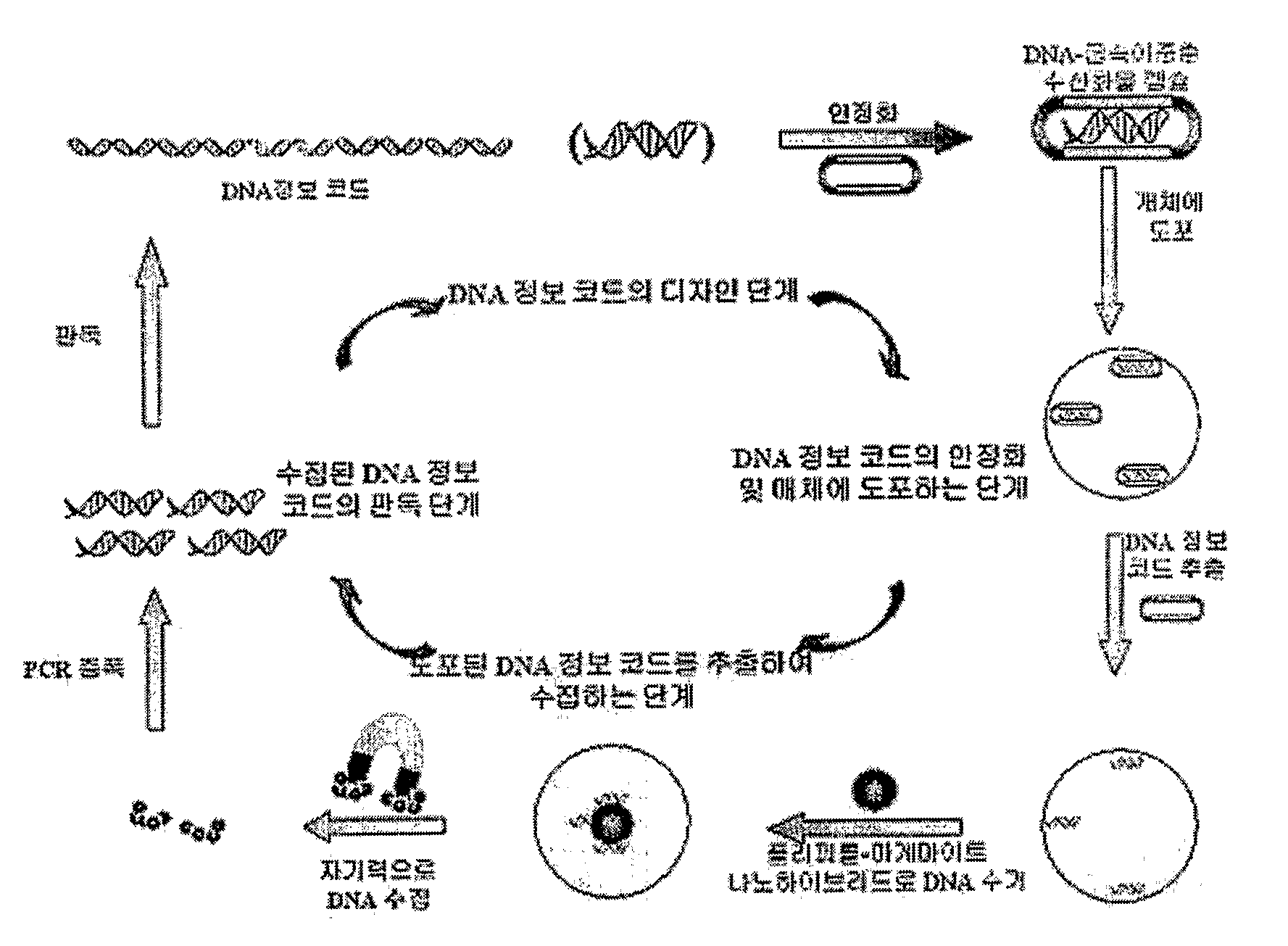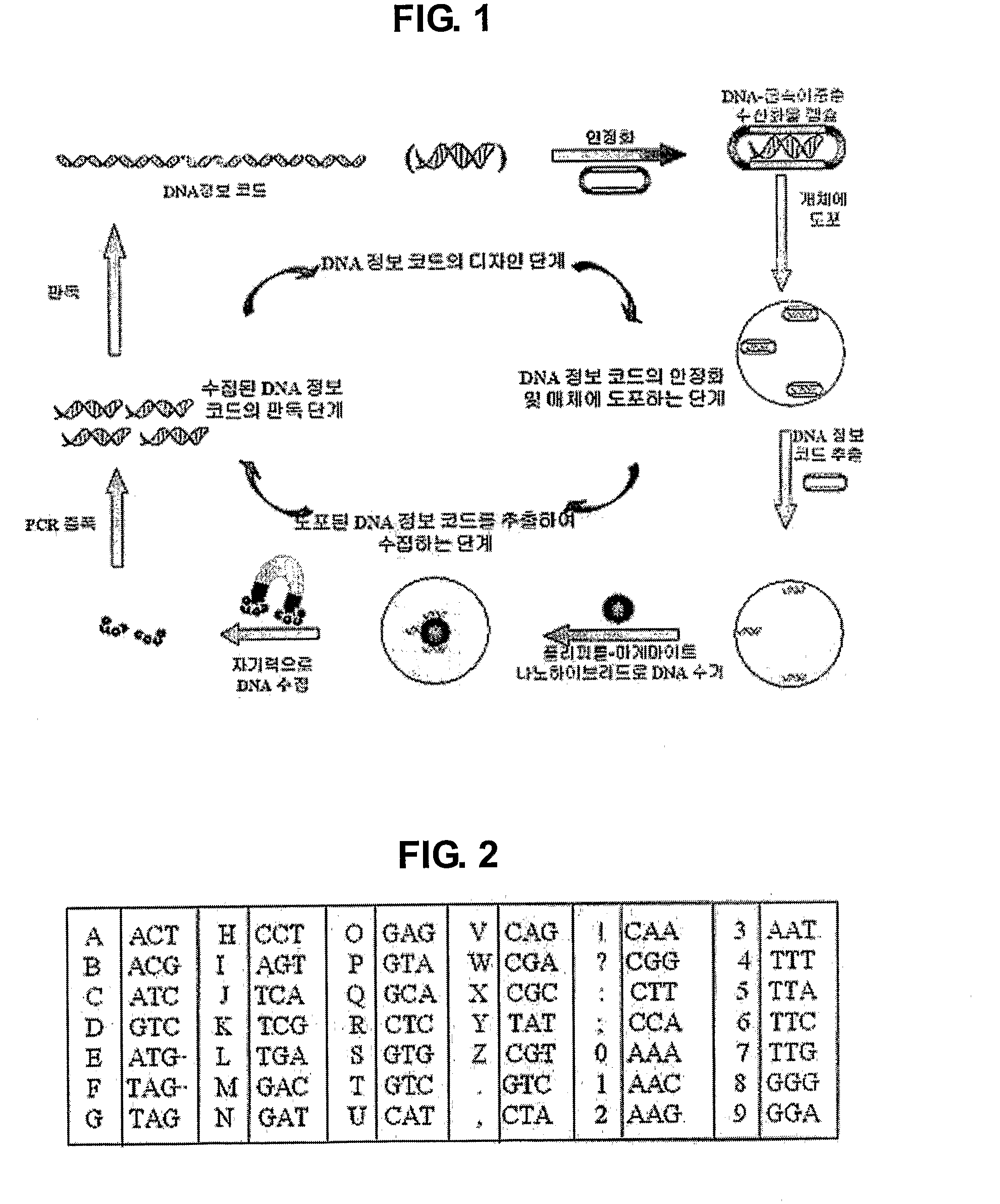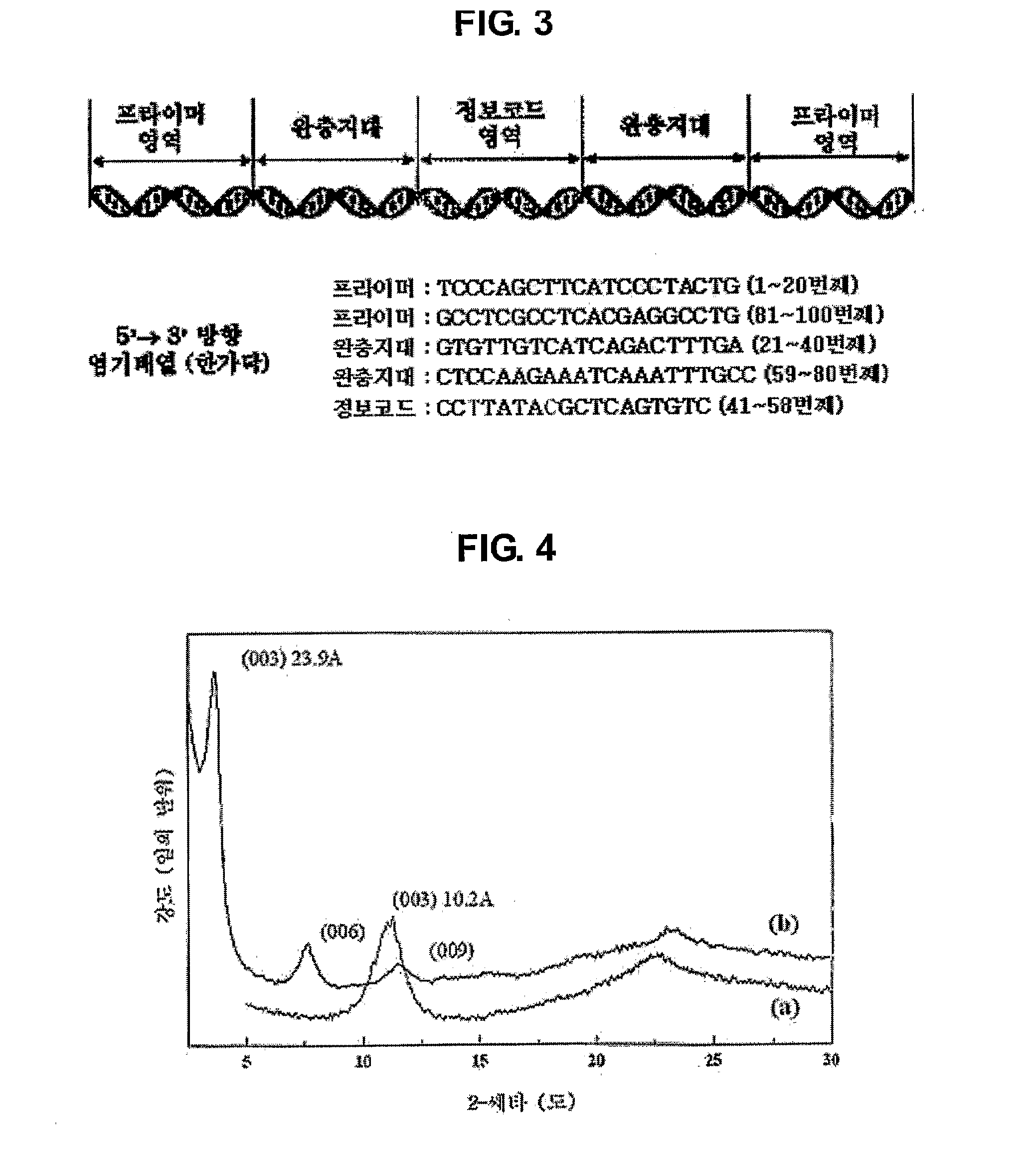Information Code System Using Dna Sequences
a technology of information code and dna sequence, applied in the field of molecular level of information code, can solve the problems of difficult discrimination and verification whether an important document, an expensive item, or an identity card, etc., and achieve the effect of excellent detection ability and excellent magnetic properties
- Summary
- Abstract
- Description
- Claims
- Application Information
AI Technical Summary
Benefits of technology
Problems solved by technology
Method used
Image
Examples
embodiments
Example 1
[0103]A DNA information code was designed as follows. A single-stranded DNA having the length of 100 base pairs and its complementary DNA strand were separately synthesized, and then, hybridized to produce a double-stranded DNA. The DNA information code was designed such that it is composed of primers on both ends, which correspond to the 1-20th base pairs and the 81-100th base pairs, buffer regions which correspond to the 21-40th base pairs and the 59-80th base pairs, and an information code region which correspond to the 41-58th base pairs. The information code region which corresponds to 41-58th base pairs had a sequence of 5′-CCT TAT ACG CTC AGT GTC-3′ and was designed to designate six letters according to the three-base pairs coding method and code the word “HYBRID” according to the information code listing table illustrated in FIG. 2.
[0104]FIG. 2 is an information code listing table according to the three-base pairs coding method, which is used for substituting the in...
example 2
[0106]The DNA information code was capsulated with a layered double hydroxide to be stabilized against the environmental factors. The layered double hydroxide (Mg2Al(OH)6(NO3)) was synthesized by titrating a 0.1 M aqueous solution in which magnesium nitrate and aluminum nitrate were mixed in a ratio of 2:1, with 0.1 M sodium hydroxide solution until a pH of 9.5 in a nitrogen atmosphere. The synthesized layered double hydroxide was freeze-dried to be used for encapsulating the DNA. In the encapsulation, 10 mg of the DNA and 10 mg of the layered double hydroxide were dispersed in 1 mL of decarbonated distilled water and the dispersed slurry was stirred for 7 days at 75° C. in a nitrogen atmosphere.
[0107]FIG. 4(a) represents an X-ray diffraction pattern of the layered double hydroxide used for encapsulating the DNA. FIG. 4(b) shows an X-ray diffraction pattern of DNA-layered double hydroxide hybrid, which was stabilized by encapsulating DNA by layered double hydroxide. Peak (003) corre...
example 3
[0108]The stability of the DNA-layered double hydroxide hybrid against the enzymatic reaction was tested by enzyme treatment. 10 mg of the DNA-layered double hydroxide hybrid was dispersed in 10 mL of distilled water and treated with 96 units of DNase I / Tris buffer solution (100 uL). Then, Ca2+ / Mg2+ ions were added to the obtained product and incubated at 37° C. for 2 hours. Likely, the DNA was treated with DNase I enzyme and incubated as described above. After the incubation was completed, the resultant products were adjusted to about pH of 2.5 by adding a phosphate buffer solution and stirred for 30 minutes to dissolve the layered double hydroxide and then extract the DNA. The extracted DNA was subjected to electrophoresis with and without PCR amplification.
[0109]The PCRs were carried out using a 25 uL of 1×PCR buffer solution comprising each 200 uM of dNTP, each 0.2 uM of primer, and 1 U of Taq polymerase (Nova-taq, Genemed). The conditions of the PCR were as follows: the initial...
PUM
| Property | Measurement | Unit |
|---|---|---|
| Temperature | aaaaa | aaaaa |
| Time | aaaaa | aaaaa |
| Time | aaaaa | aaaaa |
Abstract
Description
Claims
Application Information
 Login to View More
Login to View More - R&D
- Intellectual Property
- Life Sciences
- Materials
- Tech Scout
- Unparalleled Data Quality
- Higher Quality Content
- 60% Fewer Hallucinations
Browse by: Latest US Patents, China's latest patents, Technical Efficacy Thesaurus, Application Domain, Technology Topic, Popular Technical Reports.
© 2025 PatSnap. All rights reserved.Legal|Privacy policy|Modern Slavery Act Transparency Statement|Sitemap|About US| Contact US: help@patsnap.com



